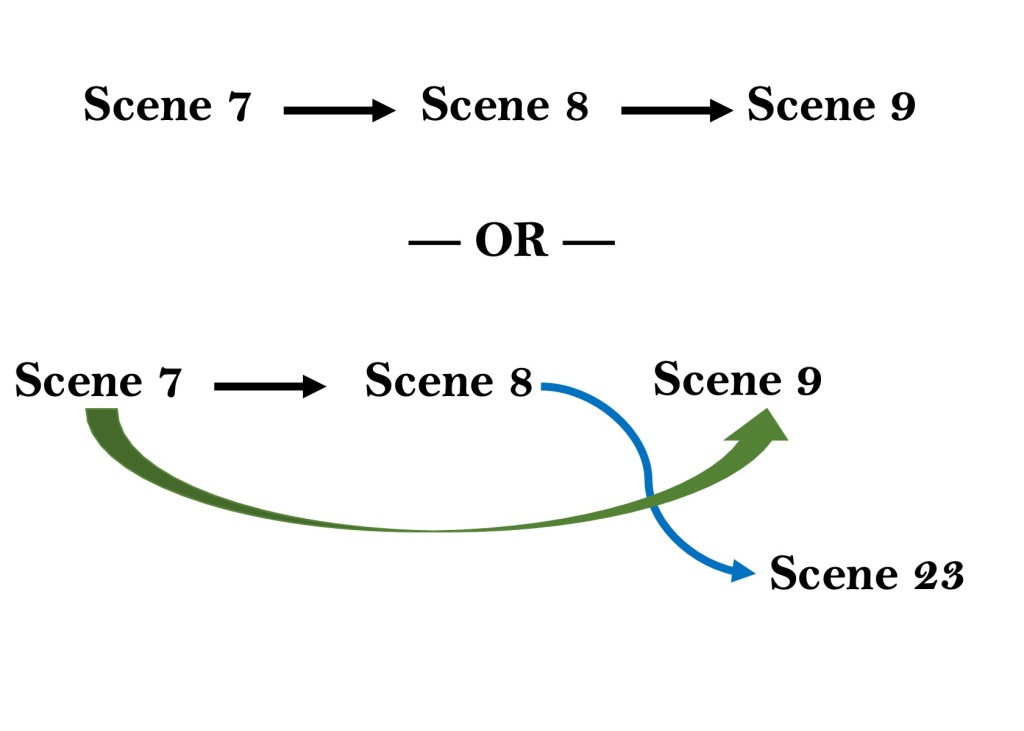by Ann Marie Williams

For the majority of a story, scenes should fall into each other like dominos.
In other words, each scene should be the catalyst for the next. One domino (scene) causes the next to fall — a scene unable to play out without the one before it.
This applies to the story as a whole, as well as the story on a more microscopic level.
When looking at the major events of a story: The Inciting incident/catalyst must occur for the events of Act II to take place… which lead to a turning point that dictates the direction of Act III… which ultimately leads to the climax and the final resolution.
But, this can (and for the most part should) apply to a story on a scene-by-scene level as well. The events of scene five, for example, shouldn’t be able to happen without the events of scene four.
Now there are (of course) exceptions. And this certainly isn’t meant to suggest that every event needs to be set-up and immediately paid-off in the very next scene (that would get incredibly dull and tedious!). But, it’s worth considering how each scene propels the story forward. What happens in a scene that causes the characters to move forward to the next step?
Even if you’re switching between characters (say, the hero and the villain), this principle can still apply. For example: What the hero does in scene seven, affects the villain in scene eight — which in turn causes the villain to make a decision that either: A) affects the hero in scene nine, or B) affects the hero later on (in which case, whatever events occurred in scene seven should probably set-up the hero’s actions for scene nine).

Addressing this “Domino Effect” on a scene-by-scene level should help solidify a story’s plot (by identifying and eliminating unnecessary moments), and also heighten a story’s pacing (by ensuring the story moves forward and progresses at an unrelenting pace without unnecessary downtime).
This wass great to read
Thank you so much! I’m glad you enjoyed it 😀